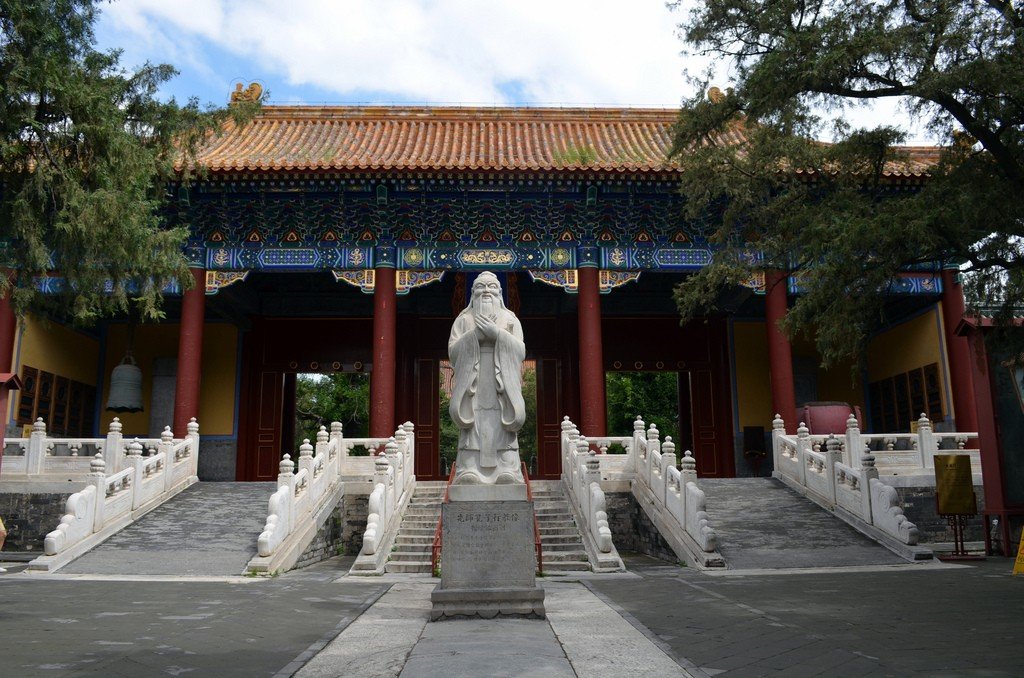Temple of Confucius
Temple of Confucius is a temple complex in Beijing dedicated to the great philosopher Confucius.
.When the Mongols conquered China, it was only after a considerable amount of time that they realized that it would be a good idea to sway the Chinese officialdom to their side. So in 1302-1306 they gave their new capital a Confucius Temple, the predecessor of the current one. The temple did not take its present form until 1906, when the doomed Qing dynasty decided to raise the profile of the Confucius cult to counter the influence of Christianity. The main project was a larger-than-ever sacrificial hall, completed only in 1916, after the fall of the dynasty.










First courtyard
In the first courtyard stand three pavilion-steles and (on the right) the house where sacrificial animals were slaughtered. One hundred and ninety-eight stone slabs record the names and origins of fifty-one thousand six hundred and twenty-four jinshi, officials who passed the palace examination from the fourteenth century onwards.
>Gate, stone drums
The Gate of Great Accomplishment (Dachengmen) leads to the main courtyard. Ten “stone drums” can be seen in the gate: copies of ancient stones made in 1790 in the shape of drums containing inscriptions.
Main courtyard, main hall
In the square main courtyard of the temple, other stela pavilions stand on either side. The main building is the Hall of Great Accomplishment, which is fronted by a sacrificial terrace. The 600-year-old cypress to the left of the ascending walkway is called the “Defeater of Traitors”: it once knocked the hat off the head of the corrupt minister leading the sacrificial ritual, thus exposing him. Inside, a tablet of Confucius’s soul stands in the central altar, with tablets of his disciples and other Confucians to the left and right of it, and most of the accessories and musical instruments used in ceremonies on the terrace or in the courtyard, including bells, phonolith stones and vaulted zithers, are displayed in front of them. For a fee, some Chinese commission a performance of ceremonial music here.
.Confucian Canon
West of the main hall, a passage leads to the Monument of Scholarship: on one hundred and eighty-nine large steles are carved in stone the thirteen canonical writings of Confucianism: 6.3 million characters that a scholar wrote down on paper between 1726 and 1737 and transferred to steles between 1791 and 1794. It is the only complete text of thirteen books written in the handwriting of the same person. The complex is currently being restored and some of its sections are closed: access is via the Imperial Academy adjoining to the west. Opening hours: daily. 9.00-17.00; entrance until 16.30.
.